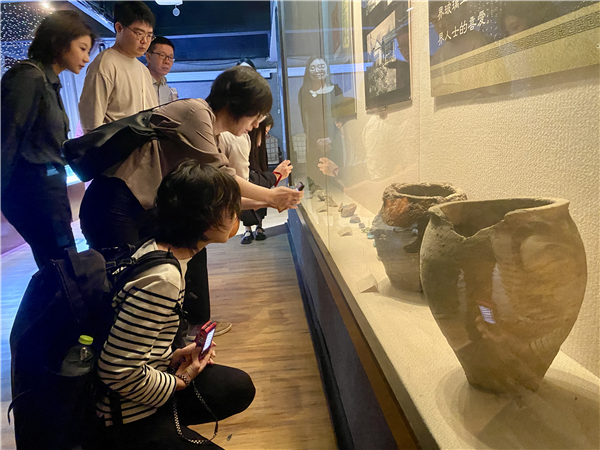
A research team with more than 10 members from Nara, Japan, participates in an event in Boshan, Zibo, Shandong. [Photo provided to shandong.chinadaily.com.cn]
A research team with more than 10 members from the Nara National Research Institute for Cultural Properties in Nara, Japan, recently carried out in-depth visits and exchange activities at glassmaking sites in Boshan, Zibo, Shandong, aiming to explore the origins and distribution routes of glass beads unearthed from the 12th to 17th centuries in Hokkaido, Japan, to confirm whether they originated in Boshan.
The team first visited the ceramic and glass art museum in Boshan, where various glass works from different periods in Boshan were displayed. From ancient and antique artifacts to modern and innovative designs, each piece reflects the development of Chinese glass craftsmanship.
Then they visited the Lushan Temple, a place closely tied with the history of glassmaking. The temple not only commemorates ancient furnace craftsmen but also serves as an indispensable cultural window into Zibo's glassmaking process. Here, they witnessed how ancient craftsmen prayed and made offerings by the furnace to ensure the smooth production of glass and the perfection of the finished products.
The research team also visited the Kangqian Glass Art Museum and the Zibo Renli Glass Art Museum. At the Kangqian Glass Art Museum, they immersed themselves in the magnificent world of chicken-fat yellow glass art, admiring exquisite works and experiencing a blend of history and modernity. The collections here showcase the exquisite craftsmanship and unique charm of glass art. At the Zibo Renli Glass Art Museum, they appreciated the diversity and innovativeness of glass art. The museum's rich exhibits deepened their understanding and increased their knowledge of glass culture.
The exchange activity helped to reveal the origins of ancient glass products in Hokkaido and provided a new perspective for studying the trade networks and cultural exchanges in ancient East Asia. As research progresses, the historical stories behind these ancient glass products will gradually come to light, offering us a new window into the history.